Words: Paul d’Orléans. Article and Photo: Scientific American
The life story of Glenn H. Curtiss, founder of the American aviation industry and a pioneer motorcycle manufacturer, is peppered with tales of bravery and mechanical inspiration. Curtiss was also no stranger to controversy, as his years-long legal battles with the Wright brothers over their airframe patents did more to impede the progress of the pioneering aviation industry than even technical hurdles! It was all sorted in the end when Curtiss-Wright Aviation was formed in 1929, although aircraft historians still argue ‘who did what first’ regarding the birth of flight. Another, lesser controversy concerns Curtiss’ 1906 speed run on Ormond Beach, Florida, which contemporary accounts claimed reached a one-way speed of 136.3mph. Curtiss used a V-8 engine of his own design and manufacture, housed in the world’s first double-loop chassis of his own construction, to tear across the wet sand at Ormond, although as the article below notes, this was not an officially timed speed run. So the question will forever hang, until someone drags the V-8 racer out of the Smithsonian Institution to see what she’ll do!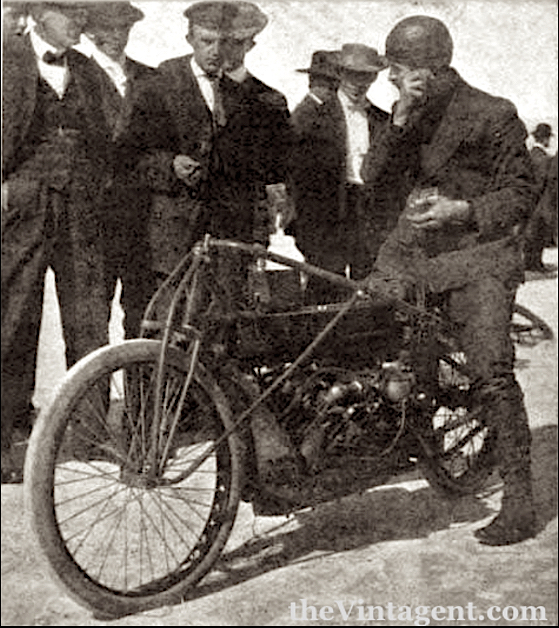
Scientific American, Volume 96, Number 06 (February 1906)
The Fastest and Most Powerful American Bicycle
“What is unquestionably the most powerful, as well as the fastest, motor bicycle ever built in this country made its appearance at the races at Ormond Beach recently; but, owing to the breaking of a universal joint and subsequent buckling of the frame, this machine made no official record. It was built by Mr. G.H. Curtiss, a well known motor-bicycle maker, with the idea of breaking all records. The machine was fitted with an 8-cylinder air-cooled V-motor of 36-40 horse-power. The motor was placed with the crankshaft running lengthwise of the bicycle and connected to the driving shaft through a double universal joint. A large bevel gar on this shaft meshed with a similar one on the rear wheel of the bicycle. The total weight of the complete machine was but 275 pounds, or 6.8 pounds per horse-power.”
“In an unofficial mile test, timed by stop watches from the start by several persons who watched through field glasses a flag waved at the finish, Mr. Curtiss is said to have covered this distance in 26 2-5 seconds, which would be at the rate of 136.3 miles an hour – a faster speed than has ever been made before by a man on any type of vehicle. Unfortunately, before this new mile record could be corroborated by an official test, the universal joint broke while the machine was going 90 miles an hour. Fortunately, it was brought to a stop without injury to its daring rider from the rapidly-revolving driving shaft, which was thrashing about in a dangerous manner. Later on, the frame buckled, throwing the gears out of line, and the official test had to be abandoned. With his 2-cylinder machine Curtiss rode a mile in 46 2-5 seconds in a race with Wray on a 2-cylinder 14 horse-power Peugeot motor bicycle, only to be beaten 2 seconds by the latter in a subsequent race, wherein a speed of about 80 ½ miles an hour was obtained. With one of his single-cylinder machines Curtiss made a mile in 1 minute 5 3-5 seconds on January 21.”
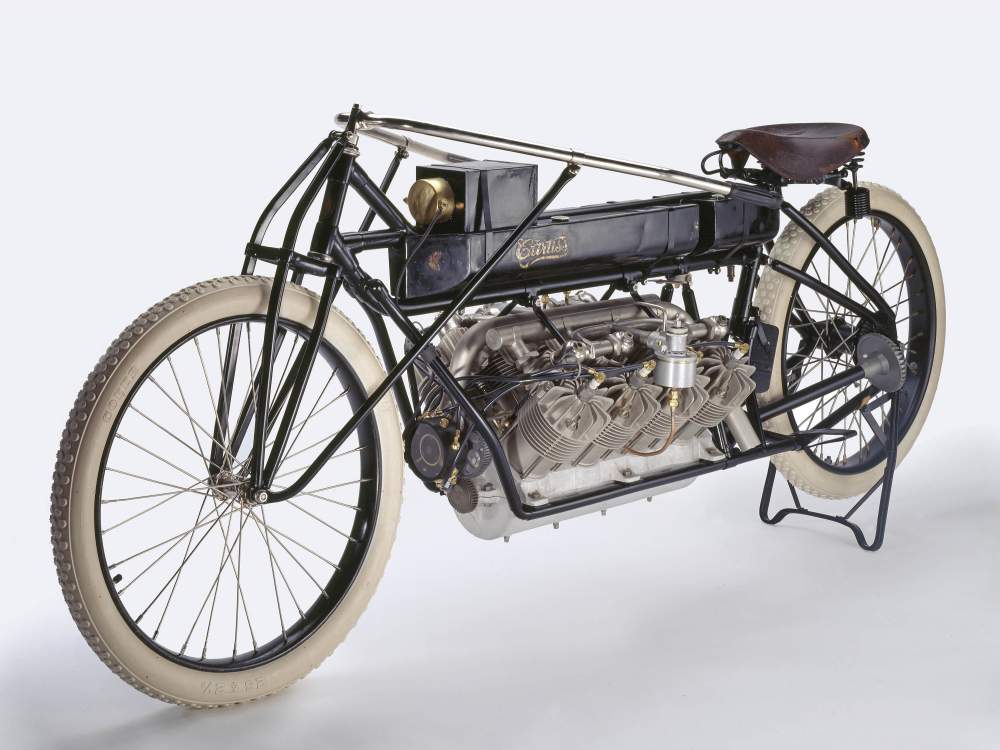

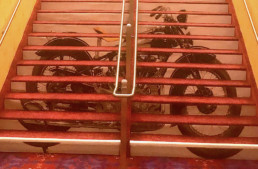
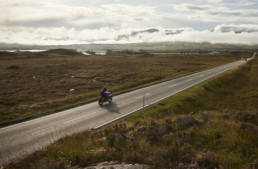
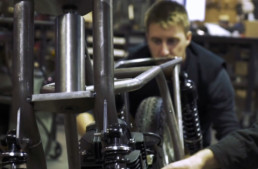
Check out the Sept-Oct 2020 edition of the Antique Motorcycle magazine published by the Antique Motorcycle Club of America. This edition does the best in depth article on the bike I’ve ever read. Essentially there is no proof the bike ever did the speed as claimed. Curtiss essentially admitted that the speed claimed was just a good piece of bs.
I think this speed record is more folklore than fact.
I say this as I have been researching the world outright motorcycle speed records of the pre WW1 era for many years and my conclusion is that he did not do this speed. Why do I think this –
• The engine was claimed to make 40hp and even it really made that does not seem enough to push an unstreamlined single speed motorcycle to 136mph. It would be c25 years before specially built factory race bikes – supercharged JAP and BMW using streamlining were able to record 135mph+. What bikes do you know of that will do 136mph – how much hp do they have… way more than 40hp. It does not seem to add up.
• Some accounts from many decades later list his 136 speed and say it was an unofficial record as the bike only made one run and the drive broke and so it could not be run in the other direction. It infers that that was the reason why the 136 was ignored. In the early years of speed records, they were set with just a single run in one direction.
• The 136 was claimed to be an average speed of a run through a measured mile. The US officials report numerous records for the mile over the years and ignore this 136. So for example October 29th 1911 Jake de Rosier set the US record for the mile at 86.7 mph in a single direction around a banked track.
• Curtiss was a very clever chap and undertstood the value of publicity. If it went 136, why did he not fix the bike and take the official world record. It seems later that some US mainstream press refer to him as the fastest man on earth, but the motoring press does not.
• In this era SPEED is a new sensation and gets widely reported in all media and if he had gone this fast it would have been headlines news across the globe – it is not.
• The motorcycle and auto magazines around this 1907 date mention other competitors and their speed at Ormond Beach and his 136mph is not mentioned. If he had gone this fast it would have been front page news, it was not. If he had gone that fast it would have been very prominently reported.
• The MotorCycle of February 13th 1907 pictures the bike and reports the bike broke down and Curtiss’s attempt on the record was abandoned.
• Curtiss did run his v twin bike at the same Ormond event and recorded 46.4 seconds over the mile (77.5 mph). Is it a coincidence that 136.36 mph over a mile would take 26.4 seconds or perhaps a mix up somewhere led to an erroneous speed.
• Read the period magazines to see what I mean.
• One period account says the drive failed at about 90 mph.
• From 1907 the US and UK, European records managed by various organisations do not record this as the world record or even mention it. In 1907 the undisputed world outright motorcycle speed record is 87mph and is held by Henri Cissac on a 1727cc v twin Peugeot set at Blackpool (UK) in the summer of 1905. This remains the record until the summer of 1911 when Jake de Rosier comes to Brooklands with his famous “No 21” Indian v twin and breaks Henri’s record by just s 1/5th a second. Shortly after Charlie Collier takes his red Matchless v twin racer fitted with the first of the JAP 90 bore ohv engines around Brooklands to be the first motorcyclist to officially top 90 mph.
• Curtiss was clearly a very clever engineer and I do not belittle him – I am just saying that I do not believe that he recorded 136 mph – it just does not add up. I would really appreciate it if people have info to contradict my views?
The 136 speed was timed by someone using a watch, looking through binoculars from a mile away and I think that is why the run is described as unofficial. The period approach was for the flag to be raised as the vehicle approached the line and then dropped as it crossed. From a mile away maybe the raising of the flag was spotted, and the timing taken – this mistake would reduce the timing by 1-2 seconds and then we have a time that equates to 136. If Curtiss believed his bike really ran 136, he would have fixed it and done it properly.
Hi Paul,
yes, it seems as the spotlight is placed on the 136mph figure it becomes ever more evanescent. I wonder at the Curtiss V8 HP rating of 40hp: that was presumably Curtiss’ calculation, as a dynamometer did not exist in those days? I reckon the actual output of an early Curtiss V8 is considerably higher than 40hp? But, using a wind-cheating riding posture, more like 80hp is needed to hit 136mph…